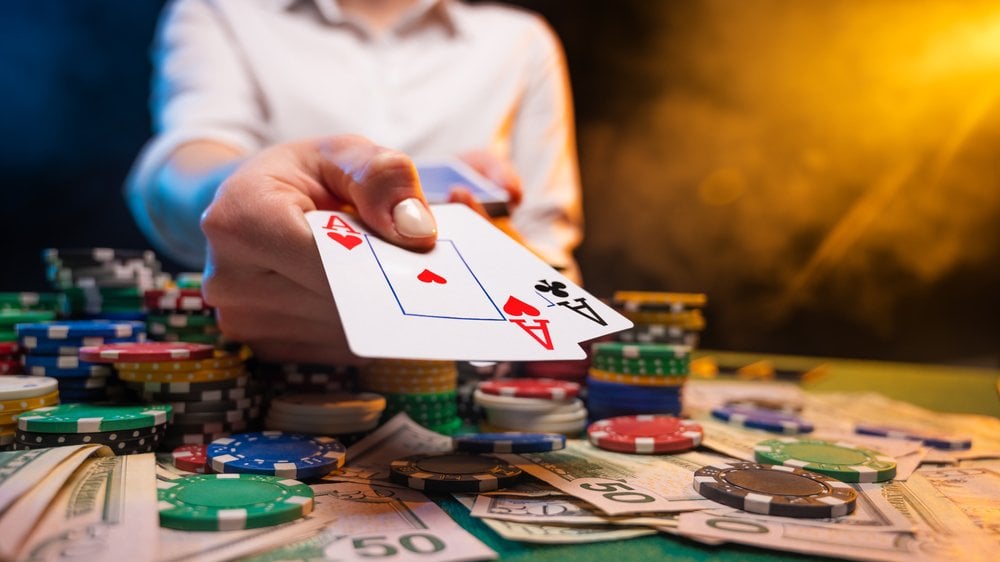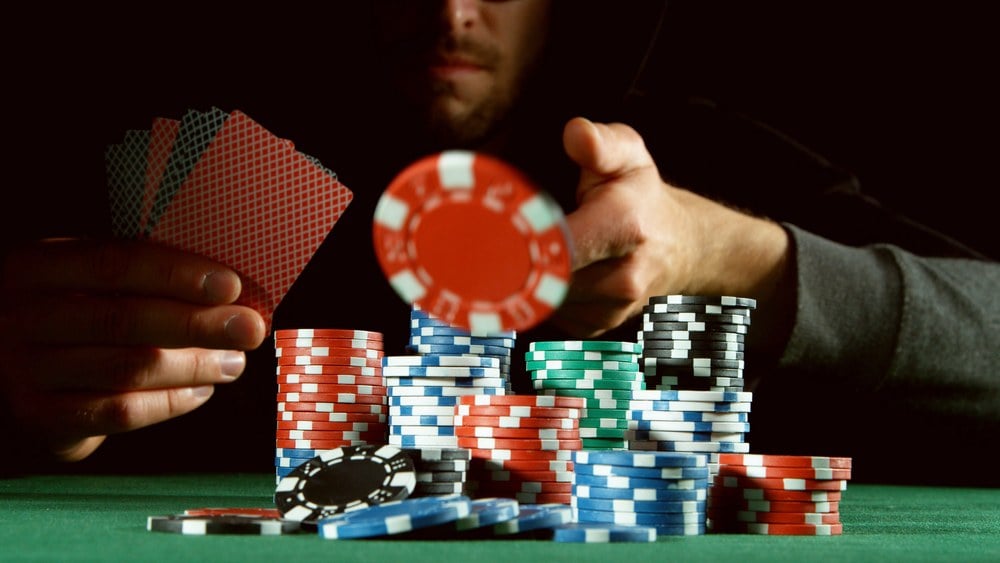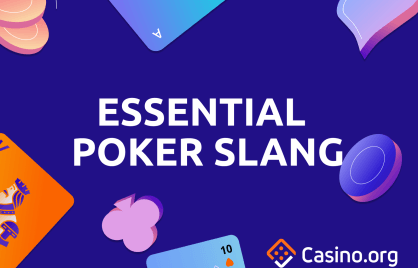The Confidence Loop: How Small Wins Build Big Poker Belief

Summarize this post
The Confidence Loop in Poker: What You’ll Learn
- Understanding the Confidence Loop: Learn what the confidence loop is and how it impacts your mindset and performance in poker.
- The Power of Small Wins: Discover how celebrating small victories can enhance your self-belief and motivation during gameplay.
- Strategies for Achieving Small Wins: Explore effective techniques for setting achievable goals that lead to incremental successes in your poker journey.
- Overcoming Setbacks: Understand how to use small wins to build resilience and maintain a positive attitude, even after losses or challenging sessions.
- Building Long-Term Success: Learn how cultivating a mindset focused on small wins can lead to sustained improvement and confidence in your overall poker skills.
Confidence at the poker table isn’t just about strutting into a room like you own the place. It’s about sitting down, facing uncertainty hand after hand, and trusting your process, especially when the chips are flying and the pressure’s on.
If you’ve ever watched a confident player in action, you know what it looks like. They’re not flustered when things go sideways. They make their decisions with clarity and don’t waste energy second-guessing themselves. But what’s less obvious is how they got that way.
Most players assume confidence shows up after they’ve had big results. Win a tournament, crush a few sessions, and then the confidence will kick in, right?
That’s backwards.
Real confidence is built from the inside out. And the way you get there is by stacking small wins, one decision at a time. Whether folding a second-best hand instead of calling off, making a solid preflop adjustment, or just showing up for your weekly study session, these “minor” victories matter more than you think.
In this article, I’ll show you how to build the Confidence Loop, a powerful feedback cycle where small actions lead to belief, belief drives better decisions, and those decisions generate even more confidence.
Because once you understand how this loop works, you can stop waiting for confidence to magically appear and start building it with intention.
What Confidence Looks Like at the Poker Table
Before we dive into how to build it, let’s get clear on what real poker confidence looks like.
Confident players aren’t necessarily the loudest ones at the poker table. They’re not always the ones firing triple barrels or stacking chips nonstop. True confidence is quieter than that. It’s controlled, grounded, and calm, even when things aren’t going well.
Here are some of the signs you’re playing with genuine confidence:
- You act decisively, without second-guessing every move.
- You stick to your plan, even if it doesn’t immediately pay off.
- You recover quickly after taking a bad beat or making a mistake.
Now let’s flip it. When confidence is low, your game tends to wobble. You might:
- Overthink every decision.
- Avoid marginal spots you know you should be taking.
- Chase results to “make up” for previous losses.
- Spiral after one bad hand.
It’s important to remember that confidence is not a fixed trait. It’s not something you either have or don’t. It’s a skill, like reading ranges, c-betting, or recognizing bet sizing tells. And like any skill, it can be trained.
Your goal isn’t to fake confidence or “act tough” at the table. Instead, the goal is to create a foundation where your self-trust grows naturally from your choices, both in-game and away from the felt.
And that’s where the Confidence Loop comes in.

Image Credit: Nejron Photo/Shutterstock
The Psychology Behind the Confidence Loop
Here is a repeatable process to build belief in your game, even if you’re not crushing right now:
- You take action.
You show up, study a spot, play a session, or make a decision that aligns with your current understanding of good poker. - You experience a small win.
A small win is any decision you feel good about. Maybe you finally 3-bet from the big blind with A5s, or you folded top pair when everything in your gut told you they had it. - You reinforce belief.
That win—however small—tells your brain, “See? I can do this.” And belief grows from evidence, not just pep talks. - Your motivation increases.
Once you feel that upward tick, you’ll likely take another action tomorrow. It sparks momentum. - You repeat the process.
And over time, those small wins compound, feeding into a steady, self-reinforcing cycle of confidence and competence.
The confidence loop might sound simple, but it’s grounded in solid research. Psychologically, we know that beliefs are shaped by behaviors, not the other way around. So if you want to feel confident, you need to start by doing things that build that belief.
Something else is important: you don’t need to feel confident to take meaningful action. You just need to act in accordance with your goals. When you take action based on who you want to be as a player, regardless of fear or self-doubt, you strengthen your mental game from the inside out.
Here’s what that means at the table:
You can fold a hand you normally punt off with, not because you’re 100% confident, but because you’re committed to playing your A-game. That’s a win. That’s loop fuel.
The key takeaway?
Confidence isn’t something you wait for. You generate it by showing up, taking action, and paying attention to the moments where you take action that’s in line with your goals.
What Counts as a ‘Small Win’ in Poker?
When players think about “winning,” they often jump straight to money. But if you want to build long-term confidence, you need to expand your definition of what a win is.
A small win is any action that moves you closer to the player you want to become.
It’s not about the size of the pot but the quality of your decision.
Here are some examples of small wins that matter far more than most players realize:
- Following your preflop plan, even when tempted to deviate “just this once.”
- Taking a moment before acting, instead of auto-piloting or reacting emotionally.
- Using your focus routine (like a breath or mantra) when you notice yourself getting scattered.
- Reviewing a tough spot after your session instead of just shrugging and moving on.
- Logging a short session when you’re tired, instead of pushing through and playing poorly.
- Sticking to your stop-loss, even when your ego wants to win it back.
These don’t feel flashy. No one’s tweeting about folding second pair. But these are the moments that create real confidence.
Because every time you choose discipline, you reinforce your identity as a serious player. And that reinforcement is how belief is built.
One of the fastest ways to feel more in control of your game is to start tracking your small wins. When you see your good choices add up over time, you realize: “I’m not the same player I was a month ago.”
That’s the shift. And that keeps the Confidence Loop spinning even when the short-term results don’t go your way.

Image Credit: Nejron Photo/Shutterstock
How to Intentionally Build the Confidence Loop
As you can see, confidence isn’t just a feeling. It’s something you can train. And just like any part of your poker game, you can build it faster when you follow a structure.
Here’s how to do it:
1. Set Process-Oriented Goals
Most players set results-based goals: “Win $500 this month,” or “Make a final table.” But confidence doesn’t come from chasing outcomes. It comes from showing up consistently for the work that leads to those outcomes.
A process goal is a commitment to something within your control. Examples include:
- “Use my pre-session warm-up before every session this week.”
- “Tag three hands per session for review.”
- “Take one deep breath before every big river decision.”
Process goals give you clarity and structure, and every time you complete one, it’s a confidence-building win.
2. Track Your Small Wins
You can’t reinforce what you don’t notice. One of the best ways to stay on top of your Confidence Loop is to keep a simple log of your small wins.
At the end of each session, ask:
- What did I do well today?
- Where did I stick to my process?
- What’s one thing I want to repeat next time?
This can be a few lines in a notebook or a quick voice memo on your phone. The act of recording reinforces your identity as a thoughtful, disciplined player. (Bonus: it helps kill the “I never do anything right” voice when variance isn’t on your side.)
3. Create a Feedback System
Confidence grows when you know you’re on the right track. That means getting good feedback, not just trusting your gut.
If you’re studying alone, pick a hand each week and review it with a solver. If you have a coach or poker friend, ask them to sanity-check a spot you’re unsure about.
The point isn’t perfection—it’s accuracy. You want to know when a decision was solid, even if the result didn’t go your way. That kind of feedback rewires your brain to trust the process.
4. Start Small, Then Scale
Most players go too big, too fast. They try to overhaul their entire game in a week, then burn out and give up.
Instead, pick one area of your game and build confidence there first. Maybe it’s 3-betting light in late position. Maybe it’s recognizing when to shut down on the turn. Maybe it’s just emotional control after losing a flip.
Win the small battles. Get reps. Celebrate those reps.
As your belief in that area grows, your confidence will naturally expand into other parts of your game.

Image Credit: Anton27/Shutterstock
Pitfalls That Break the Loop (and How to Fix Them)
If confidence is built through small, intentional wins… it can just as easily be broken when we fall into common mental game traps.
Here are a few patterns that quietly sabotage the Confidence Loop—and what to do instead:
1. Chasing Only Big Results
Many players ignore small wins because they’re chasing the high of a huge score or epic bluff. But when confidence depends on big results, you create a fragile loop that’s entirely dependent on variance.
Fix:
Zoom in. Start tracking wins that happen in a single hand or a single session decision.
Example: folding second pair on the turn when everything in you wanted to call. That’s a win worth noting.
2. Measuring Success by Money Only
Bankroll matters, but it’s not the best feedback loop for confidence. Why? Because your short-term results are often outside your control. Confidence becomes volatile if you’re only “winning” when the graph goes up.
Fix:
Measure what’s in your control: your decisions, discipline, and your mindset.
You can lose money and still win the session mentally if you played with clarity, composure, and intention.
3. Negative Self-Talk and Harsh Judgments
We’ve all done it: made one mistake and told ourselves we’re trash. But judgment breaks the loop. It teaches your brain that you’re only valuable when perfect, which makes learning feel dangerous instead of empowering.
Fix:
Start practicing neutral self-observation.
Instead of saying, “I’m so bad, I punted that spot,” try:
“I made an error in that hand. What can I learn from it?”
4. Ignoring the Process When You’re Losing
It’s easy to abandon your mental game habits when you’re stuck in a downswing. But that’s when you need the loop the most. Skipping your warm-up, punting for revenge, or blowing off study only delays your recovery.
Fix:
Double down on your process when you’re running bad.
Remind yourself: “The path back starts with the next smart decision.”
Confidence doesn’t disappear in a single moment. It erodes over time when you stop doing the little things that build belief.
But it also rebuilds quickly when you return to those same small wins with intention.

Image Credit: Jag_cz/Shutterstock
Final Thoughts: Confidence is Earned, Not Given
If there’s one message I want you to take away, it’s this:
Confidence isn’t something you wait around for—it’s something you earn through action.
You don’t need to feel invincible to play well. You don’t need to wait until you’re crushing to believe in yourself. What you need is a system for building belief, one decision at a time.
That’s what the Confidence Loop gives you.
Every small win you log…
Every process goal you hit…
Every moment you act in alignment with the player you want to be…
It all adds up.
So here’s your challenge: choose one area of your game where you can start stacking small wins this week. Maybe it’s discipline, maybe it’s decision-making, maybe it’s emotional control. Start there. Build your loop. Keep it going.
Title Image Credit: Jag_cz/Shutterstock


